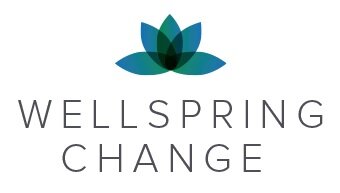I start with the taming of wild elephants. Wild calves are sometimes taken at a young age to become working animals, away from their mothers - tethered. The elephant is tied for long periods and cannot break free. It grows into adulthood, powerful and muscular in one way, but its spirit and freedom of expression crushed.
As human beings we can live with metaphorical bonds that tie us to limited lives. Sometimes through life experience we grow up with limited self-expression. Often what compounds the problem is that we can’t even see the bonds, they’ve become a part of the fabric of our lives.
The work I do using Constellations is often about freeing ourselves of those bonds, developing a better understanding to reveal where and how they keep us safe, but stuck. We explore the layers of emotional context, I sometimes refer to it as our emotional geography, for example our family of origin, to understand the roots of these bonds.
In Constellations we physically place the relevant aspects of a situation in front of us using floor markers or other objects as representations to give a feel for relationships and our wider context. There’s often something really empowering and enabling about seeing our story laid out physically in front of us – we can see the wood for the trees.
It can show us how we can become entangled; some ties more obviously linked to specific events; others are just part of a historic backdrop. We learn responses to experiences which enable us to survive. Ultimately though many of our learned behaviours leave us unfulfilled. It’s frustrating, like running old versions of software on your computer.
When we recognise the bonds and understand their impact, we can begin the work of replacing them with updated thinking and behaviours that leads to more life-affirming choices (it’s like installing updated software)!
An imaginary client story
I’m using an imaginary client here to illustrate how bonds can tie us. Imagine someone whose parents couldn’t cope when s/he cried or needed a hug; s/he was given the basics to survive but experienced precious little tenderness and affection. Expression of raw emotion wasn’t ok, instead s/he remembers judgement. Vulnerability was a sign of weakness and neediness.
This client learns to navigate his/her family by suppressing vulnerability and feelings. S/he becomes a functioning adult, holding down a good job, yet feeling like a ghost and finding it hard to maintain close relationships.
Laying out the emotional geography of a client’s issue
Beyond victimhood
Through Constellations my client and I explore different parts of his/her family. And we do so without seeking who’s to blame, since labelling people as victims or perpetrators keeps everyone frozen. I encourage my client to allow everyone their rightful place in their family, we simply try to understand with a compassionate heart why things were that way. This doesn’t mean we white-wash painful events, as acknowledging pain is a vital part of the process, but so too is developing a sense of gratitude for life.
As this client observes patterns of withdrawal from intimacy, s/he begins to shed attachments to stories about blame and victimhood. Part of our work together[i] is to notice when judgment of others arises, and conversely when “I’m not good enough” self-critic prevails. My client’s gradual understanding of her/his context allows their hearts to open to the people around them, and this creates a breathing space for new possibilities.
Unlike the captured elephant, most of us have the chance to untether the bonds that tie us, and to re-write what’s possible. Neuroscience shows us that our brains have an incredible capacity to create new neural pathways, quite literally to re-wire ourselves[ii].
To find out more, please get in touch here.
[i] We agree homework between sessions
[ii] Dr Joe Dispenza’s book: “breaking the habit of being yourself”.




